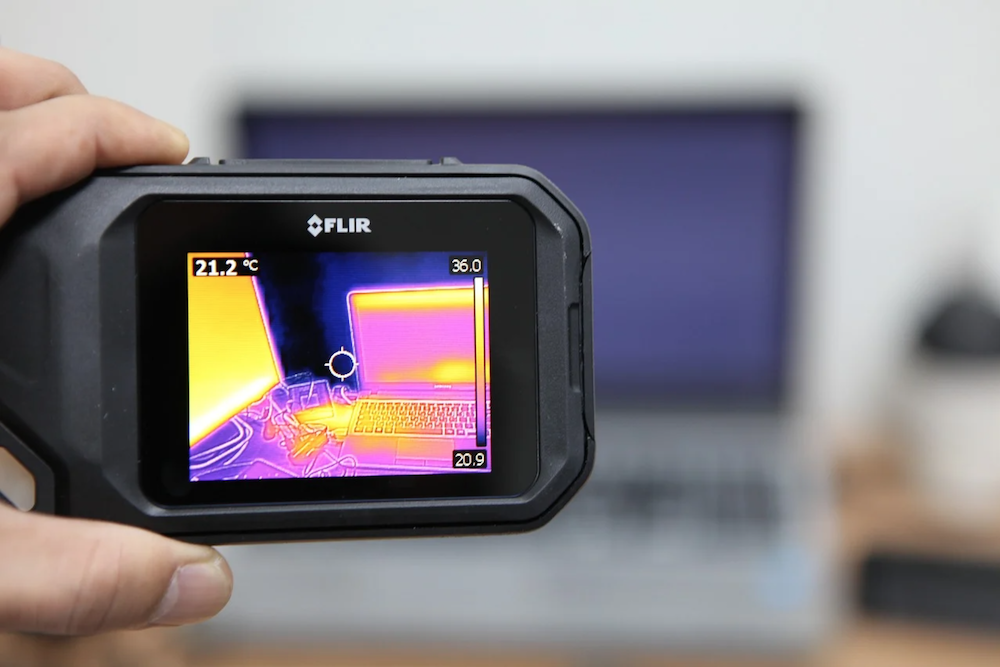Around the entire globe, our governments are responding as best as they can to the unprecedented circumstances generated by the COVID-19 epidemic. In many countries, authorities have imposed restrictions to their citizens’ movements and have released guidance on the hygiene required to reduce the spread of the coronavirus. The main objective of this activity is to reduce the reproduction number of the coronavirus by restricting contact between groups of people as much as possible.
Also, several governments and healthcare organisations have provided guidance on the main symptoms associated with the virus. One of the symptoms is fever or an increased body temperature.
How are thermal cameras helping us control the pandemic?
There are many different approaches being applied in order to reduce the reproduction rate of the coronavirus. These include self-isolation methods like working from home, improved hygiene such as hand washing and the deployment of PPE or personal protective equipment in order to reduce the prospect of infection.
Also, when symptoms do appear there are clear guidelines on what to do next. Mainly this involves restricting social contact through self-isolation for up to fourteen days. Healthcare professionals must be contacted digitally in case symptoms persist. Prior to any vaccine being available, the battle against coronavirus is led by the ability to detect and identify symptoms and isolate individuals suspected of an infection. This is a combined effort between technology applications and different key workers.
Thermal cameras can actually play an important part in this coordinated approach. Such cameras provide thermal imaging for body temperature monitoring solutions. These can instantly and accurately identify individuals with elevated body temperatures, which is one of the key symptoms of the new coronavirus. These solutions can provide businesses and organisations with an extra layer of protection to their premises or facility from increased exposure to the COVID-19.
Businesses and institutions can then decide how best to deploy this information based on geographical location, culture and the critical nature of the premises. In certain circumstances, a security officer might ask the individual to scan their body temperature using a medically approved sensor. Ultimately, this is a decision for each business and organisation on how best to deploy these solutions.
Thermal body temperature scanning devices are alternative solutions
A very important distinction to make in the overall societal response to the new coronavirus is that body temperature solutions are not a medical solution. They are not able to identify the virus and do not protect businesses or people from catching the virus.
Thermal body temperature solutions are tools that can help with the identification of a key symptom of the disease. They can help businesses and organisations identify individuals showing such symptoms, but they cannot diagnose or treat the coronavirus. But this does not mean that thermal temperature solutions don’t add any value in the overall response. As a matter of fact, they help by providing a non-invasive way to check body temperature, can do this at faster rates than traditional hand-held scanners and at a greater distance, which is obviously safer. The deployment of these solutions in business premises may even encourage positive behavior with members of the staff more likely to stay home when they are feeling unwell with a fever.
Thermal temperature solutions require a radiometric thermal camera in order to measure temperature differences in individuals entering the field of view. Even more advanced solutions might use blackbody devices to help calibrate the temperature measurement, particularly in environments with less control where the elements can influence the final reading. Artificial Intelligence algorithms can be integrated to help target the temperature reading on the forehead or near the eyes, which are the parts of the body where the temperature will be most accurate.
The blackbody calibration tool works with a target object whose temperature is accurately known and controlled. This is very important in human temperature measurement. By deploying the blackbody calibration tool, it is much easier to establish a precise relationship between temperature and gray level.
With this method, false temperature alarms caused as a result of environmental influence can be efficiently reduced, and the precision of the thermal temperature solution can be controlled to more accurate parameters. But monitoring accuracy depends on the stability of the body temperature and therefore it is recommended to install the system in a really stable environmental condition to make sure that the skin temperature is stable.
The emergence of Artificial Intelligence and AI technology, and specifically face detection and recognition algorithms, will play a very important role in the evolution of these solutions as well. Algorithms will help carry out more accurate temperature tests. Cameras are able to do this by locating specific areas of our face, such as the forehead or near the eyes, with more precision. This might be critical when it comes to people wearing masks. Combining thermal cameras with facial detection will enable thermal body temperature solutions to combine precise temperature scanning with the best face location to take the measurement from, enhancing the overall measurement quality.
It should also be noted that facial detection is used to enhance the accuracy of the solution with better positioning of the measuring point on the face. This is not used to detect specific individuals and doesn’t break privacy compliances like GDPR.
While there are still challenges to the effectiveness of thermal imaging cameras for measuring human temperature in public areas, particularly when face masks are everywhere, the introduction of facial detection and Artificial Intelligence can improve the accuracy of temperature scanning.


